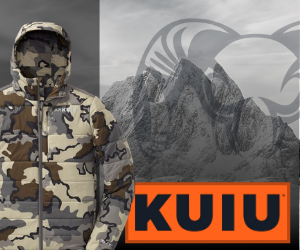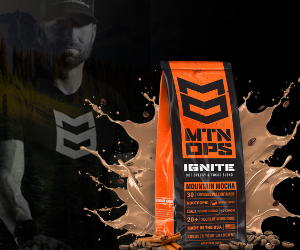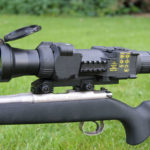The racoon is one of the most unique animals on the North American continent. Its distinctive front paws, masked face and ringed tail make it very easy to identify. Racoons are solidified in American culture as some of the most prolific and adventurous pioneers like Daniel Boone and Davy Crockett are often depicted wearing a hat made of racoon pelt, also known as a “coonskin cap.” Meriwether Lewis, of the famous Lewis and Clark Expedition, is recorded as having worn a coonskin cap for much of their journey across what is now the United States.
Since the 18th century, people have hunted racoons across the United States for their pelts, and also for meat as early settlers found it sometimes difficult to consistently harvest larger game animals. Racoons were killed throughout much of the 19th century and into the 20th century, but as the demand in pelts declined, many hunters shot less and less racoons.
How to coon hunt
Racoons were hunted in the United States quite often until the 1950’s when the animals were no longer shot for sport or meat in the same manner as they had been a century earlier. However, there are some dedicated hunters that have kept the tradition of coon hunting alive in rural America.
Coon hunting at night
For those familiar with the sport, they understand that coon hunting is done largely at night and with the use of dogs. This is because the racoon is nocturnal, moving mainly during night time hours.
Racoon Characteristics and Behaviors
Racoons are surprisingly intelligent creatures and have shown impressive ability to gain access to closed cabinets, drawers and other places where food is stored using their dexterous paws that closely resemble the human hand. Racoons have impeccable memory and have been recorded taking their food to water sources like creeks or rivers and washing their food before eating.
Racoons are mostly nocturnal animals and will rarely venture out of their dens during the daylight hours. They will seek shelter in a variety of different places and can often be found creating dens in barns, attics of houses and other places in areas near dense forests. In the wild, racoons typically create dens in hollowed out trees or fallen logs.
Known for their omnivorous eating habits, racoons are opportunists when it comes to their diet and will eat everything from acorns and nuts to fish and bird eggs. However, most homeowners in rural areas know them to be quite a nuisance sometimes as coons can manage to gain entry into houses and raid the kitchen during the night while the owners are sleeping.
When can racoons be hunted?
In most states throughout the country, racoons can be hunted during the late autumn and winter months. While every state has its own unique laws and restrictions on coon hunting, racoon seasons usually range from late October to February.
Some states have released restrictions on when racoons can be hunted or trapped due to the sharp decline in the number of hunters who actually pursue racoons in the way that outdoorsmen in America once did. Racoons can still be quite a nuisance to farmers and homeowners, so they are sometimes shot out of mere frustration after the animals have repeatedly been caught stealing eggs or other food items from homes and farms.
Since racoons are nocturnal animals, most hunters understand that their best chances as seeing and getting an opportunity to shoot a racoon will happen during the cover of darkness. For more than a century, hunters have been well-aware of this fact and have worked to specially train dogs that will track and “tree” a fleeing racoon.
When threatened, racoons will retreat to the safety of treetops in the forest. As hunters became more aware of this fact, many settlers and pioneers began training dogs to track racoons and force them to run up into a tree where they are quite an easy target for hunters equipped with spotlights. Dogs have become an intrical part of racoon hunting in America and racoon hunting is now commonly assumed to be done with the assistance of hounds or beagles.
Coon hunting preparation
Racoons can be hunted with a wide variety of different types of firearms. Some hunters who want a more challenging experience will use handguns for racoon hunts, but most hunters will opt for a small caliber rifle like a .22 / .17 HMR or a Ruger 10/22. Using these types of guns is especially important for hunters who plan to cook and eat racoons as a larger caliber will destroy much of the meat.
Some hunters might use shotguns to take down racoons, but doing so is not usually recommended for anyone who plans to eat their harvested coons because of the presence of lead shot that will be embedded inside the meat. Racoons are not typically considered the tastiest animals to eat, and adding lead pellets to the meal is quite undesirable.
Regardless of your choice of weapon, it is very important that hunters practice and become very accurate with their chosen gun or bow. Missing a raccoon with even a small caliber bullet like a .22 can put nearby homes and people in danger of stray bullets.
Coon hunting dogs
Coon hunting is best done with well-trained dogs. Hunters typically use beagles or hounds because they possess a relentless determination to “hound” their prey and have great ability to sense the presence of racoons with their noses.
More than a century, hunters have worked with specific breeds of dogs and found that specific types of dogs are more adept at hunting racoons. These dogs are usually referred to as “coon hounds.”
It is crucial to properly train your coon hounds to track and tree their prey. Hunters who have experience using dogs to tree and shoot racoons are well aware that having well-trained dogs can be the difference in a very successful hunt and a wild goose chase through the dark forest.
Training your coon hunting dogs
Training a coon dog is a very long and arduous process that is truly the subject for another article. However, it must be noted that there are some specific points that you must adhere to in order to train a coon dog.
Start by training your coon dog from a young age to get them acquainted with the sport and with their prey. Coon hunters usually employ the use of multiple dogs on a hunt, so it can be a good idea to let a younger dog tag along to see how its done and get a feel for what they’re meant to do.
Training your coon dog to pick up on the smell of a racoon is crucial. Letting your pups play with and chew on an old racoon hide is a great way to pique their curiosity and embed the smell into their brains as a target. Once they’ve gotten used to seeking out the coon hide, you’ll want to work on getting them to “tree” the coon.
Most dog trainers will drag the coon hide across the ground for a number of yards before tying it up in the overhanging limbs of a tree. This will teach the dogs that their prey will ultimately be found in the tree and that they should wait on their master to dispatch the animal once they’ve “treed” it.
Where to find racoons
Finding the right spot to go coon hunting can be a challenge as these animals usually come out only at night. Most hunters will stick to an area where they know racoons already live because you can waste quite a bit of valuable time in searching for them through the night.
If you’re seeking out the best type of location for racoons, it’s important to keep one thing in mind: racoons will always be found near a water source. This can be a lake or river, or even a small creek. Regardless of the size of this water source, you can rest assured that racoons won’t venture too far from water as most of their food tends to be found in swampy or marshy areas.
Once you’ve located the water source, you’ll want to look for tall, mature trees that are nearby, specifically hardwoods like oak. These kinds of trees will produce acorns and nuts, which racoons will use to supplement their usual diet with. Racoons will flee to the safety of the heights of these trees when they feel threatened, so you can expect to end up in mature hardwoods at some point or another on a successful coon hunting trip.
An added bonus on good places to find racoons are abandoned buildings or old barns that are near these wetland forests. Racoons love to take refuge in the upper parts of old, abandoned buildings as they offer superior protection from the elements and can be easily accessed by racoons.
Racoon hunting gear
Coon hunters need to be aware that racoon hunting is often done in the dead of night during the coldest months of the year. With this in mind, you’ll want to dress as warm as possible with plenty of layers, gloves and something to cover your head. The ideal clothing for coon hunting will feature reflective portions for added safety if you’re hunting with a group.
Having the right kind of lights is another crucial tip for coon hunting. It is very important to carry at least two reliable spotlights on your coon hunting trip, as well as extra batteries and smaller flashlights. The last thing you want to do is get out in the middle of the woods at night and have your spotlight fail you and leave you stranded in the dark.
Most experienced coon hunters will wear waterproof boots or even waders in order to be prepared to wade through creeks or rivers if a racoon retreats across a waterway. As for your hunting dogs, you’ll want to make sure they are fitted with collars that have your name and address stamped on them in the event that you a dog is lost.
Remember that coon hunting is done on foot and there is not much idle time that you’ll spend sitting around. Be sure to take a comfortable backpack or other bag that you can easily carry all your gear in and keep your hands free to operate either your weapon or spotlight.
How to track a racoon
Understanding and trusting your coon dogs is crucial to the success of a hunt. Once your dogs are out and searching for racoon scent, you’ll want to pay close attention to the signs that your dogs have picked up a scent. This goes back to the importance of having well-trained dogs to hunt with.
Once your dogs are on the trail of a coon, you’ll want to stay after the animal and be persistent. If your dogs somehow lose the scent, have them circle back over the area and try again to get the scent. It’s usually easy to tell when dogs have gotten close to a racoon as they will be overly excited. Being able to tell when your dogs have picked up on a racoon is extremely important.
How to “tree” a racoon
How will you be able to tell when your dog has “treed” a coon? Dogs will often hound the racoon and bark as they trail the animal, but once they’ve gotten close enough to realize that the animal is in a nearby tree, your dogs will usually growl and utter deeper barks out of pure instinct.
If your dogs are all standing or circling around one specific tree, you can bet that there’s a coon in the upper portions. Once dogs “tree” a racoon, the coon will rarely ever try to go anywhere else, making it easy for you to get in position and take a shot.
How to cook or prepare racoon meat
Once you’ve had a successful hunt, you’ll be able to enjoy the true American delicacy of racoon meat. Some hunters say that racoon meat is not nearly as desirable as other game animals due to the heavy amounts of grease contained in the meat, but when prepared in just the right way, racoon meat can make one heck of a meal.
Many hunters will attest to the fact that racoon, although it has quite a strong taste, is surprisingly tasty. Racoon meat can be prepared in a variety of methods from stews to barbecue and other styles. We recommend you try a few recipes out and find out which one you like best.








